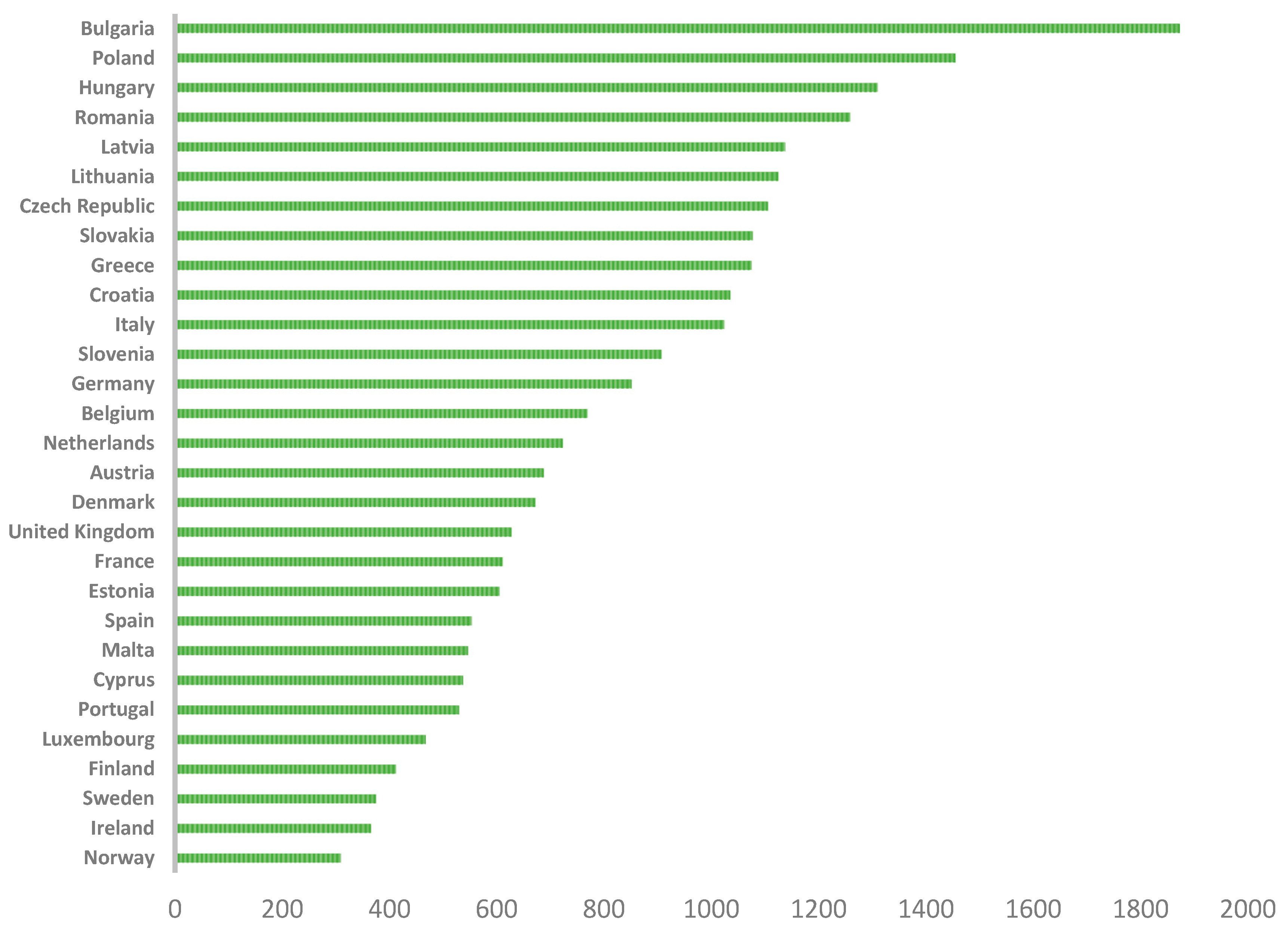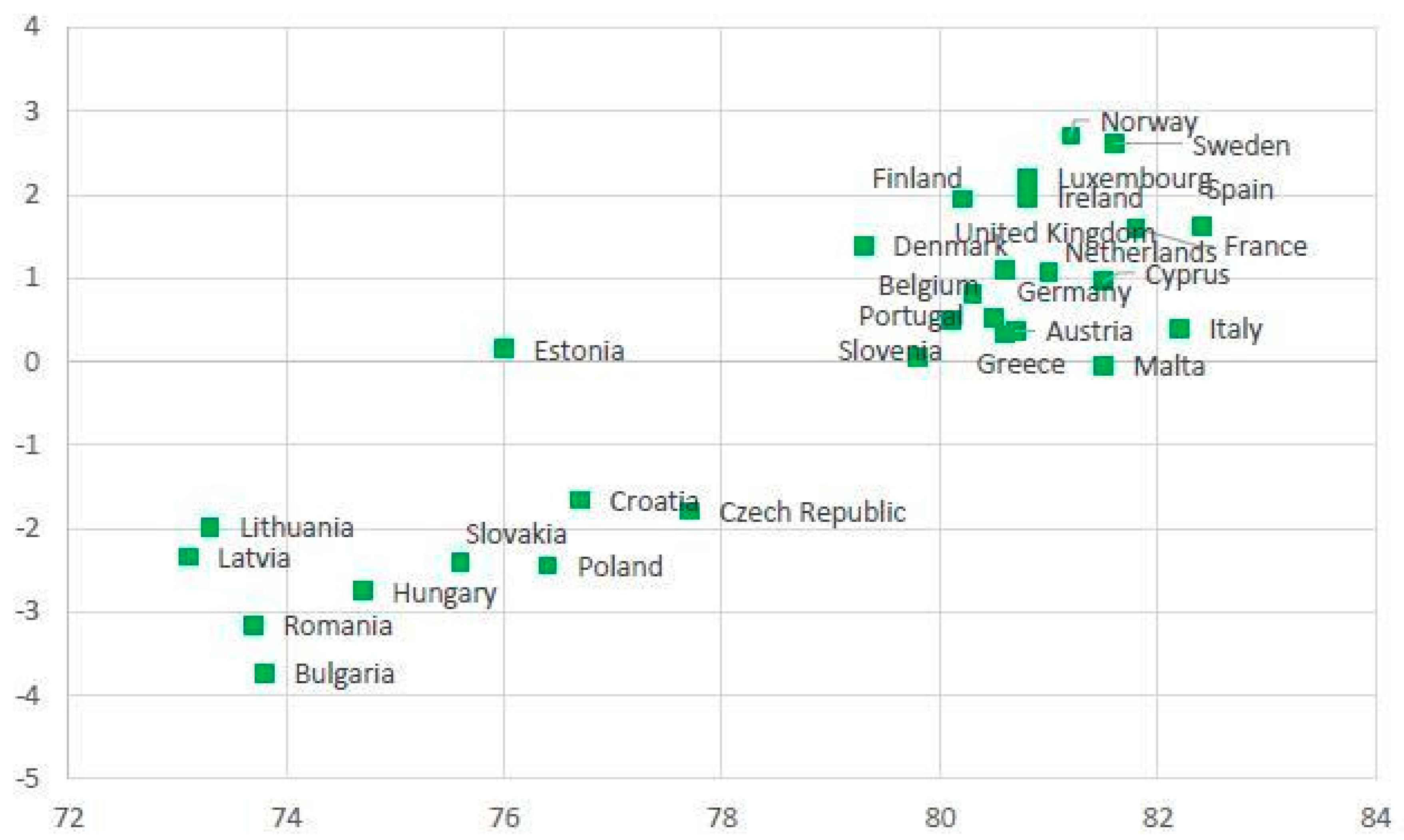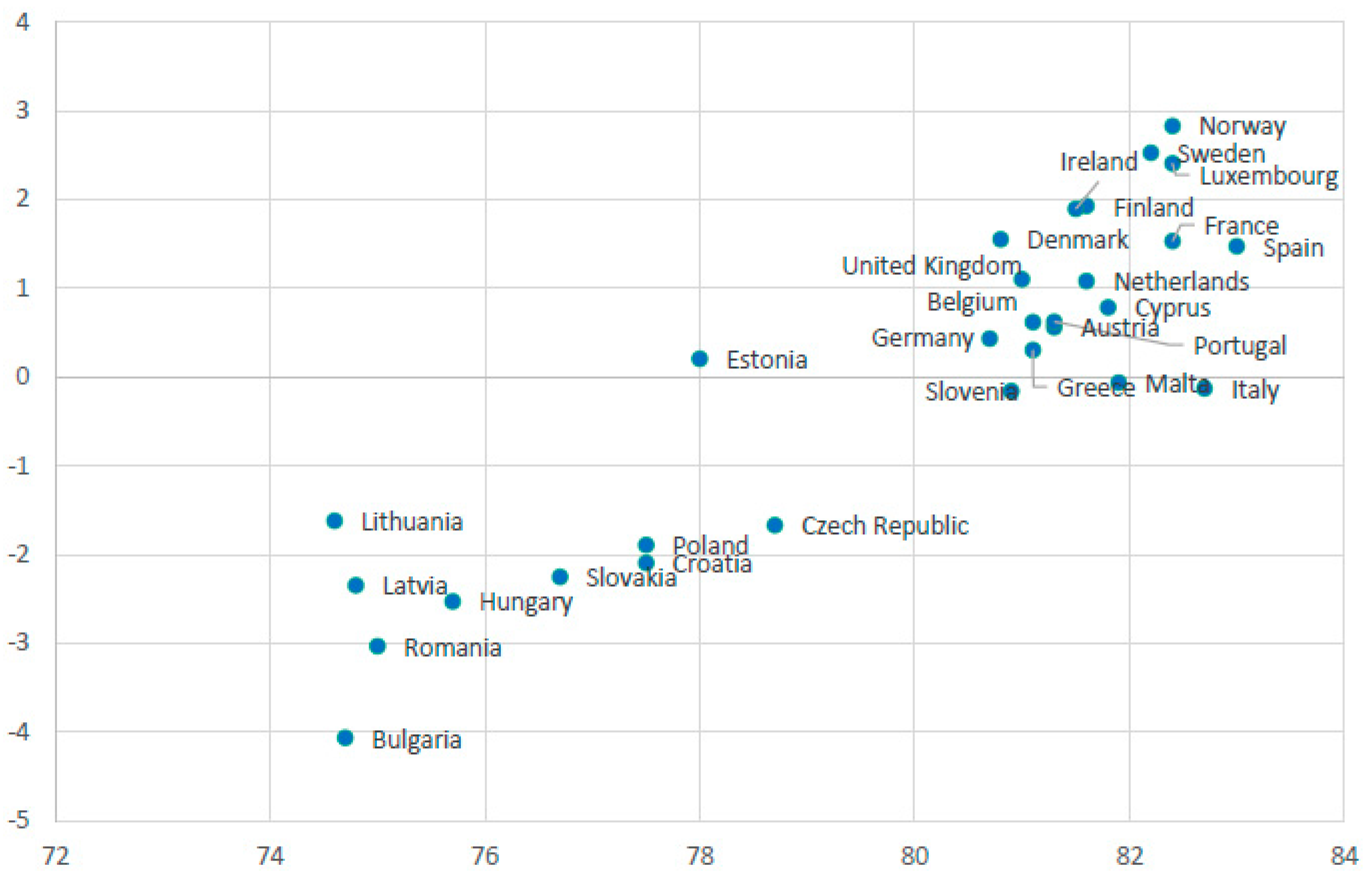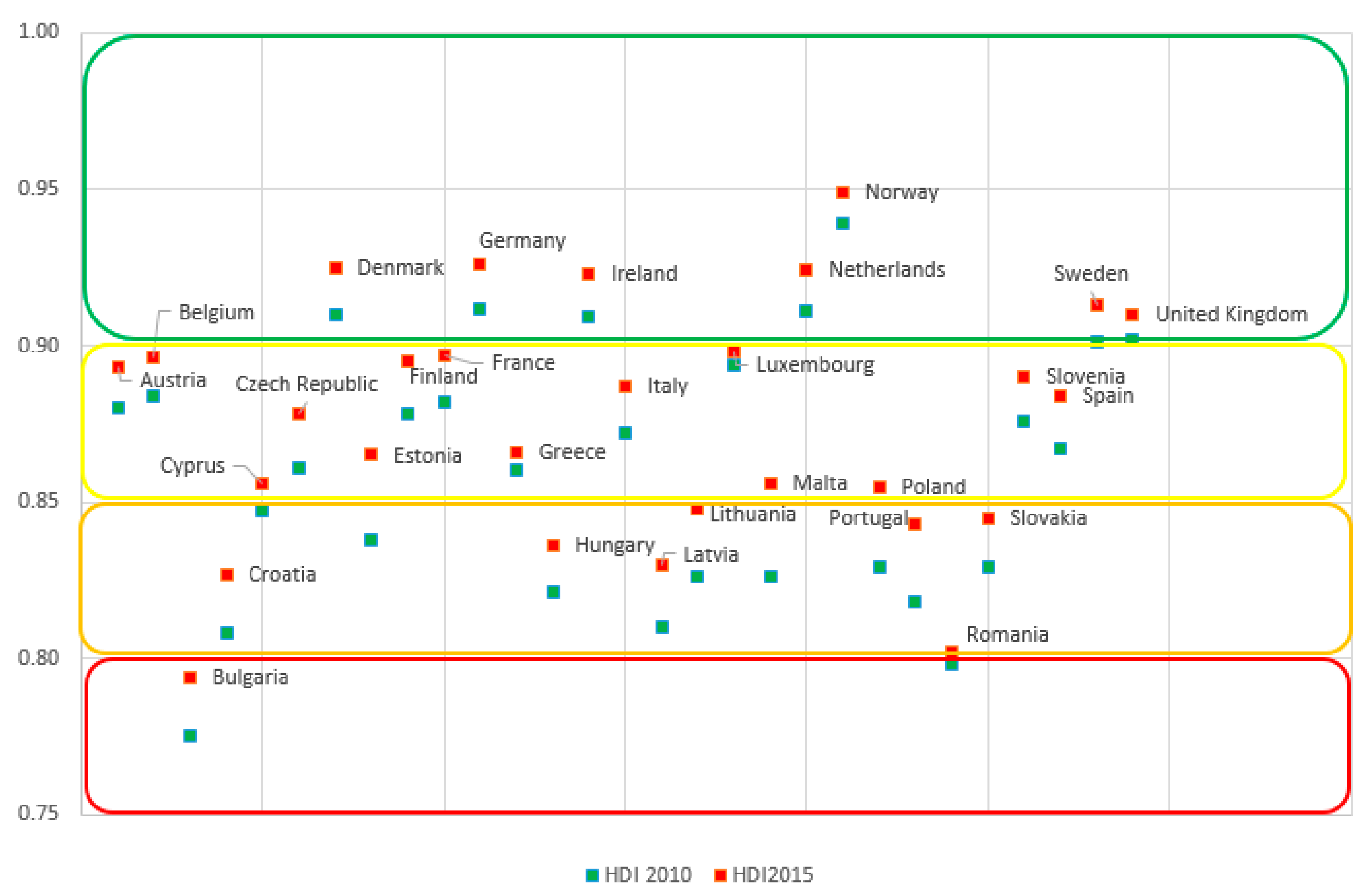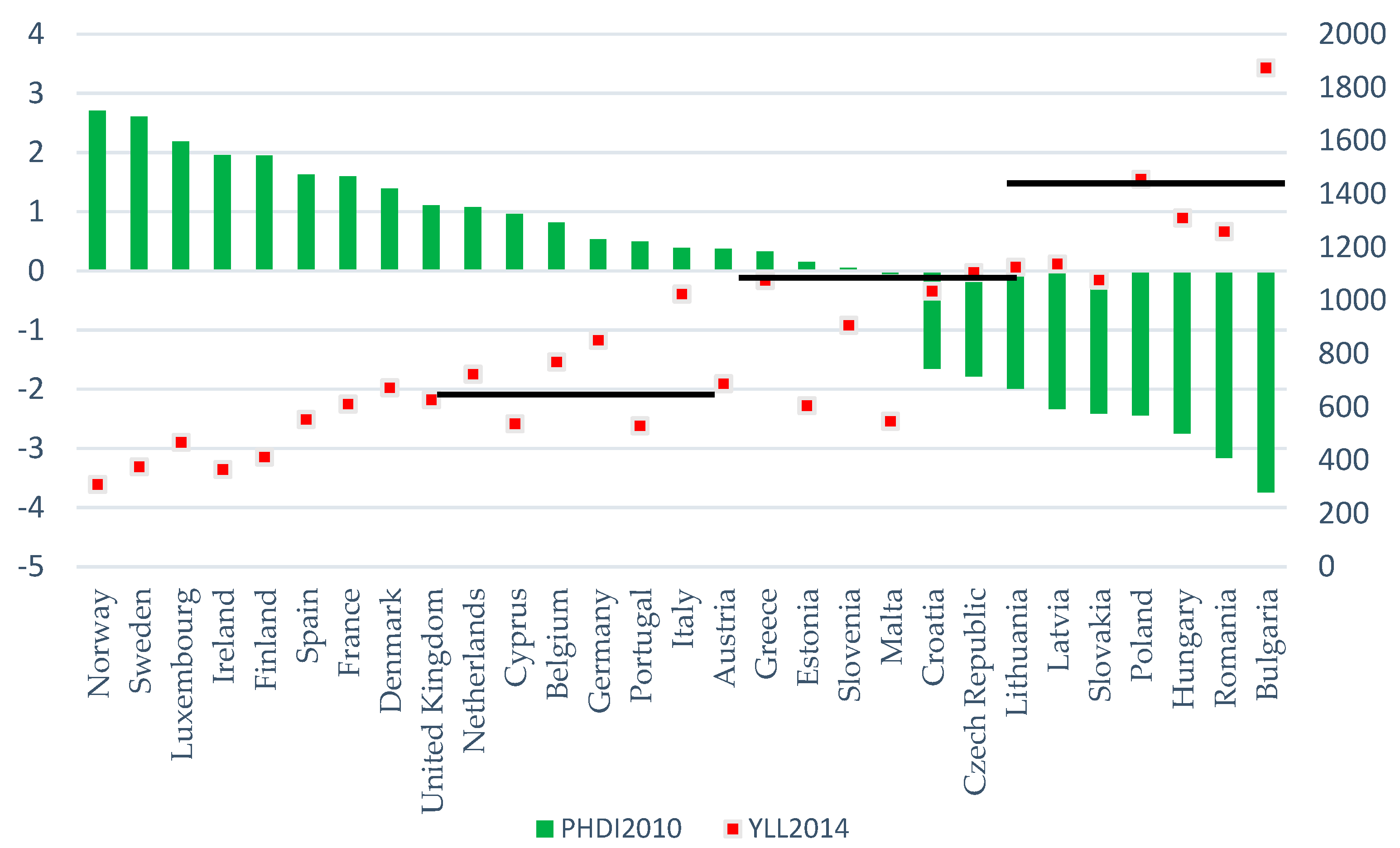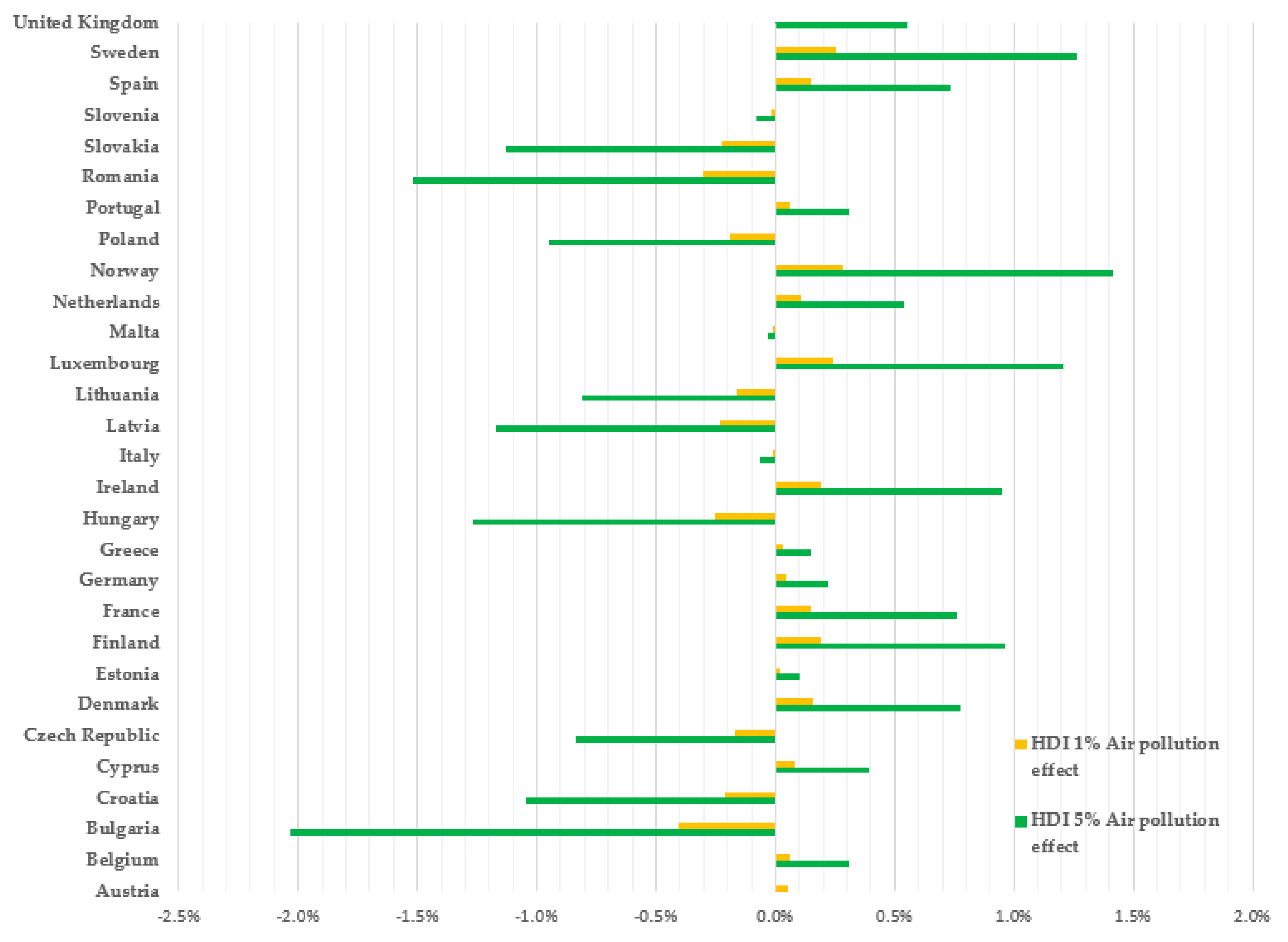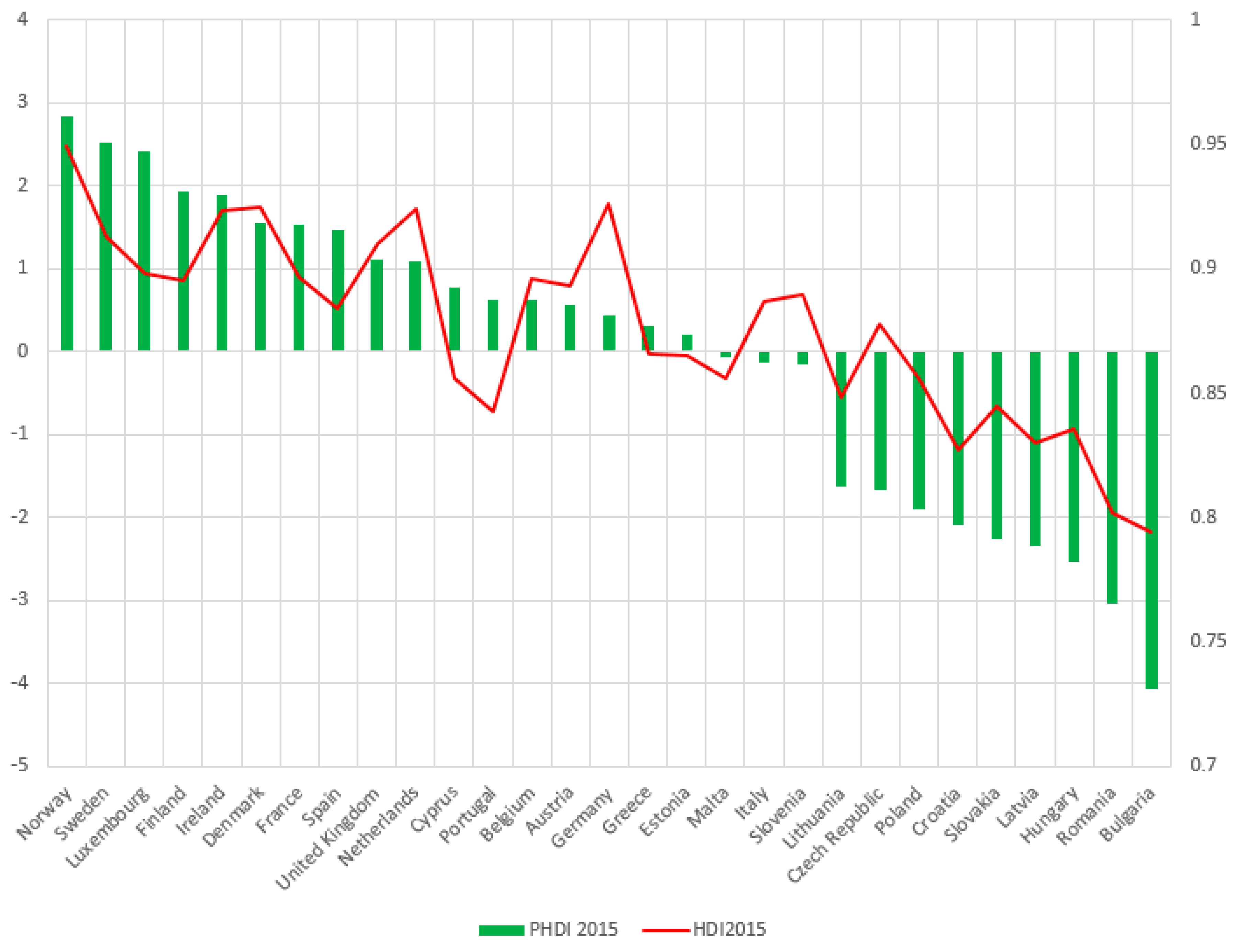The air pollution effect on the various well-being indicators is the subject of many studies in economics and health. The negative impact of pollution on life expectancy, especially for people with low-income levels, is a common conclusion of most academic works in the field. For example, it was applied the regression discontinuity analysis to demonstrate the negative relationship between total suspended particulates and life expectancy in China [
1]. According to Mannuci et al. [
2], developing countries have a greater problem with exposure to ambient air pollution than developed countries. This is due to both the industrialization and urbanization processes that led to the formation of crowded metropolis centers. They synthesize several articles that converge to validate the following hypotheses: the inverse relationship between a country’s level of development and exposure to air pollution, the positive relationship between ambient PM2.5 concentration and mortality rate, and the positive relationship between the population’s poverty level and exposure to polluted air. The same positive relationship between ambient PM2.5 concentration and all-cause mortality is stronger for people with low socioeconomic status is demonstrated on a sample of nearly 61 million 65-year-olds of the US Medicare beneficiaries, followed for up to 13 consecutive years [
3]. Daily concentrations of ambient PM2.5 were predicted by using an artificial neural network, and two-pollutant Cox proportional hazard models were used to analyze survival data. The authors show that there is no threshold for ambient PM2.5 concentration below which it does not affect mortality. This finding is similar to other studies [
4,
5]. Using a household air pollution exposure index [
6], it was found that exposure to Suspended Particulate Matter (atmospheric particulate matter with no limit size) is negatively correlated both with level of income and with level of education. Other similar studies evaluate the relationship between exposure to ambient pollution and a variety of socioeconomic status [
7,
8,
9].
Air pollution indicators are closely linked to sustainable human development. The most used indicator to classify countries according to the level of development is the Human Development Index (HDI). The ability of the HDI to reflect accurately the level of development and the need to integrate the environment into the HDI have been questioned for many years. As presented in [
10], the author started from the HDI to elaborate four different composite indicators to reflect development. The four indicators have been built to correct the following the HDI’s deficiencies: the inappropriate treatment of the income differentials, the non-application of principles of diminishing returns, the equal weight of components, and the method of aggregation of these components into the final indicator. The country ranking was inherently affected by the HDI’s deficiencies. To calculate the weight of each component from data, he applied the principal components analysis and obtained two weighted indexes. The robustness of these indexes is tested by comparing them with the ranking of other ones. Using a similar approach, it was found that the HDI fails to capture the quality aspect of the health dimension [
11]. The results of the principal component analysis have highlighted the following: measuring human progress through a composite index is quite relevant; the three dimensions of the concept, namely health, education and income, can be integrated into one relevant factor with equal weights. Neither in studies like [
10] nor [
11] suggest new components for the HDI. The author in [
12] presented that the HDI in its structure does not correctly reflect the differences between countries in terms of the level of development. According to this research, new indicators that are completely different from HDI components are needed to correctly reflect development. Another researcher also recognized the complexity and the need to adjust the human development indicators [
13]. The same opinion is also found in [
14], which states that the measurement of human development should include aspects related to health effects, social and political rights, and education. In another study, the author applied a case-study method to demonstrate that integrating environmental indicators into HDI calculations can reduce its value [
15]. In order to study if the HDI reflects air quality, the author in [
16] selected three pollutants: carbon dioxide, oxides of nitrogen, and sulphur dioxide. He used data for 15 developed countries and 15 developing countries and concluded that the HDI is relevant for the quality of air for the developing countries, but it is not relevant for the developed ones. Based on both the HDI and the Environmental Performance Index in [
17], a new indicator was proposed: the Environmental Human Development Index (EHDI). The author identified a positive relationship between the two indicators. Her paper provides a comparison between country rankings from the HDI and EHDI point of view. Based on Martha Nussbaum’s capabilities approach, Comim [
18] presented that HDI could have a proactive perspective, be inter-temporal, and try to capture for example the use of natural resources for future growth. His work briefly presents the alternatives to HDI existing in the literature and suggests improvements for this composite indicator.
The aim of this paper is to calculate a new composite indicator for EU countries to measure human development by including the effects of ambient PM2.5 concentration. In order to capture the evolution of these two coordinates for our sample of countries, we will compare the results of 2010 with 2015 data. Having as a benchmark the HDI, we will focus on comparing the results with this indicator for both years, to reflect the importance of ambient PM2.5 concentration. Similar to HDI methodology, we establish rating classes for each country and observe the transition migration matrices in time for this new indicator, the Pollution Human Development Index (PHDI). The methodology and data used to calculate this indicator is described in
Section 2. In
Section 3, the main results are presented, while the
Section 4 offers our conclusions.
